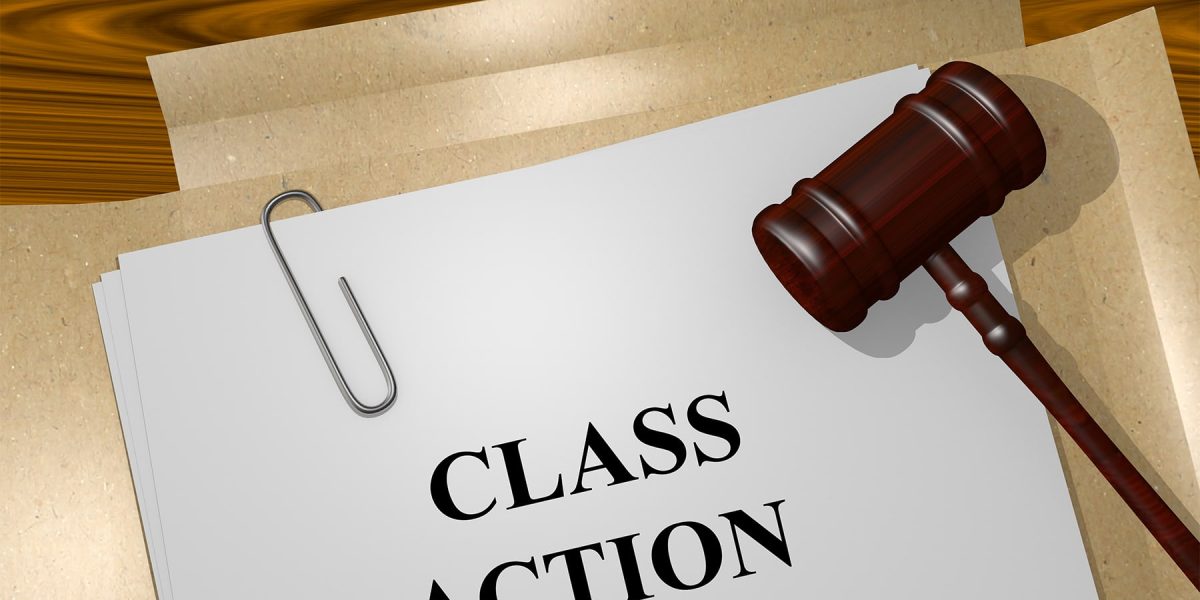Exploring the Assertio Class Action Lawsuit: Your Comprehensive Guide
Exploring the Assertio Class Action Lawsuit: Your Comprehensive Guide
Blog Article
Discovering Course Action Suits: What You Need to Know
Course action claims have come to be increasingly widespread in today's legal landscape, with people joining pressures to seek redress versus corporations and companies. In this discussion, we will discover the ins and outs of class activity lawsuits, dropping light on their interpretation, the requirements for declaring, and the potential benefits and downsides involved.
The Meaning of Course Action Claims
What exactly is the meaning of a course action suit? A course activity lawsuit is a legal activity submitted by a group of individuals that have comparable claims against an offender. It allows a multitude of people, called the course members, to collaborate and seek their claims collectively, as opposed to each private declaring a different lawsuit. When the number of possible complainants is too big for private claims to be functional, Course action claims are typically brought. They are typically utilized in situations including consumer security, item liability, safety and securities scams, and employment issues.
One of the crucial elements of a course action lawsuit is that the lead complainant, additionally called the class representative, stands for the passions of all the class members. The court appoints the lead complainant based upon their capability to fairly and sufficiently represent the class. The lead complainant works closely with the course activity attorney to look for and build a solid situation compensation or various other treatments on behalf of the whole class.
In order for a course activity suit to proceed, the court has to accredit the class. This indicates that the court identifies that the lawsuit satisfies certain needs, such as numerosity (a big adequate number of course members), commonness (common inquiries of legislation or reality), typicality (the insurance claims of the lead complainant are common of the course), and adequacy of depiction (the lead plaintiff and class counsel are capable of representing the class's passions) When the class is certified, the suit can move on, and any judgment or negotiation got to will relate to all class participants unless they choose to opt-out.
Course activity suits offer a necessary purpose in supplying accessibility to justice for individuals who might not have the resources to pursue their cases individually. They likewise advertise efficiency in the legal system by combining comparable claims into a solitary activity, reducing the concern on both the court and the events involved.
Demands for Submitting a Course Activity Lawsuit

One more demand is that the course needs to be adequately many. The specific variety of course participants needed may vary depending on the jurisdiction and the nature of the case. It is generally anticipated that the course has to be huge enough that joining all the individual complainants right into a solitary claim is much more efficient than having multiple different claims.
Furthermore, it is necessary that the class representative, that is the private or entity bringing the suit in behalf of the course, has common claims and defenses to those of the course participants. The agent must additionally have the ability to effectively and fairly stand for the rate of interests of the whole course.

Benefits and Drawbacks of Course Action Lawsuits
Course activity suits provide both benefits and downsides for complainants and accuseds involved in the lawful process. On the one hand, one of the substantial benefits of class activity suits is that they offer a reliable and affordable method for people with comparable cases to go after justice collectively. By combining many similar cases right into one claim, class activities streamline the lawful process and conserve time and resources for both defendants and plaintiffs.
Another benefit of course action claims is that they allow individuals with minimal resources to seek payment for their problems. In cases where the prospective recuperation is small, private claims might not be economically feasible. By joining forces in a course activity, complainants can merge their sources and increase their possibilities of acquiring a reasonable resolution.
Furthermore, class actions can promote social modification by holding companies liable for their activities. By bringing attention to widespread misconduct or defective products, class actions can pressure business to alter their methods, enhance product security, or implement reforms.
However, class actions also have drawbacks. One potential drawback is that individual plaintiffs may have limited control over the litigation Read Full Report procedure and the ultimate outcome of the instance. The lead complainants and their lawyers commonly make key choices in support of the whole class, which may not always align with the individual interests of each class member.
Furthermore, class actions can be lengthy and prolonged, commonly taking years to reach a resolution. The complexity and size of these legal actions can cause delays and prolonged lawsuits, which can be discouraging for both defendants and complainants seeking a timely resolution.
Steps Entailed in a Class Activity Claim
The process of a course action legal action normally begins with the recognition of a prospective course and the declaring of a grievance. As soon as a group of individuals that share similar claims versus a defendant is recognized, the lead complainant, or class rep, files an issue in support of the entire course. This complaint lays out the supposed wrongdoing and looks for damages or various other relief for all members of the class.
After the complaint is submitted, the court will establish whether the case fulfills the requirements for course accreditation. These requirements normally consist of numerosity (a large sufficient course), commonality (similar legal cases), typicality (the lead plaintiff's insurance claims are depictive of the class), and adequacy of depiction (the lead complainant and their attorney can adequately represent the class's rate of interests)
If the court licenses the class, notice is supplied to all possible course members, providing them the chance to opt-out if they desire to seek their own individual insurance claims - Archer-Daniels-Midland class action lawsuit. If a sufficient number of course participants continue to be, the case will proceed to the discovery phase, where both sides gather evidence and info pertinent to the cases
Following discovery, the events may participate in settlement arrangements or continue to trial. If the instance goes to trial and the class dominates, the court will figure out the suitable damages or relief to be awarded to my blog the class participants.
Current Spots Course Activity Claims
With a strong understanding of the steps included in a class action lawsuit, it is currently crucial to take a look at some current site cases that have made a significant impact in the lawful landscape. Future FinTech class action lawsuit. These situations have not only formed the method class action legal actions are performed however have additionally produced modifications in different industries
One such landmark instance is the Volkswagen discharges scandal, which led to the biggest class like it action negotiation in vehicle history. In 2015, it was disclosed that Volkswagen had actually installed software in their lorries to cheat emissions examinations. This deception influenced countless consumers worldwide, leading to a course action lawsuit. The negotiation reached in 2016 totaled up to approximately $15 billion, making up afflicted vehicle owners and penalizing on Volkswagen.
One more notable situation is the Johnson & Johnson talc suit. Hundreds of ladies submitted lawsuits versus the firm, claiming that their talc items caused ovarian cancer cells. In 2018, a court awarded $4.7 billion in damages to 22 complainants. This case raised concerns about the safety and security of baby powder and motivated Johnson & Johnson to customize their product labeling.
These current spots cases demonstrate the power of class action claims in holding firms accountable for their actions and seeking justice for afflicted people. They work as instances of just how course activity lawsuits can cause significant modifications and secure the civil liberties of customers.
Verdict
In verdict, class action claims are a legal device that permits a group of people to jointly seek justice for an usual complaint. Comprehending the requirements and actions entailed in filing a class activity suit is essential for people looking for to pursue this lawful avenue.
One of the vital aspects of a class activity claim is that the lead plaintiff, additionally understood as the course rep, stands for the interests of all the course participants.In order for a course activity claim to proceed, the court has to certify the course. This implies that the court figures out that the suit satisfies certain demands, such as numerosity (a large sufficient number of class participants), commonality (usual questions of legislation or fact), typicality (the insurance claims of the lead complainant are common of the course), and adequacy of representation (the lead complainant and class advice are qualified of representing the class's passions) Once the course is licensed, the suit can relocate onward, and any judgment or negotiation got to will apply to all class members unless they pick to opt-out.
The process of a class activity legal action usually starts with the recognition of a potential course and the declaring of a complaint.
Report this page